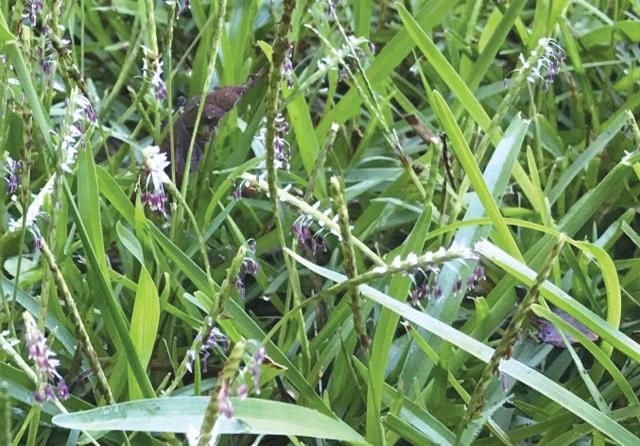
3 minute read
Urban agroforestry Potential integration into city planning efforts
Urban agroforestry
Potential integration into city planning efforts
by Sarah Lovell, University of Missouri-Columbia
Sarah Lovell Urban agroforestry makes efficient, double use of space. Trees that produce food can line city streets, parks, and other spaces. Right, from top: Kousa dogwood, Jujube, American persimmon, pawpaw.
Should we reimagine a “garden city” that
could help adapt our urban areas for a variable and uncertain future? One that provides several benefits, like cooling the city, providing green areas for city-dwellers, and even a fresh food supply?
That type of question is studied by scientists in the field of urban agroforestry. As you can imagine, plant science, horticulture, agriculture, forestry, and other sciences contribute to the development of urban agroforestry. These scientists work with landscape designers and urban planners to purposefully integrate food production into the fabric of the city. But there are some hurdles that need to be overcome to get to our garden city of the future. One barrier is that the value of land in cities is high. There is usually limited space, and the space available is expensive. In addition, zoning and tax policies may prohibit or restrict food production. Land in cities can also be contaminated. This could be from former industrial plants, lead paints from residential structures, or other contaminants.
Defining urban agroforestry
It is possible to provide tree or shrub canopies that also produce food but getting to that goal could be complicated. Fruits, nuts, and berries are just a few examples that could be provided by the right plant material. This type of system is not meant to replace the current food system, but to complement it.
Woody species of trees and shrubs are perennial, not needing to be replanted each year. They can be described as “permaculture” – or permanent agriculture. You may have a patch of your own gooseberries or plums you enjoy from your garden. The concept is the same, but on a bigger scale.
Urban agroforestry can advance urban food production
Urban agroforestry could serve as a progressive form of urban agriculture. The woody species would need to be integrated into an overall plan, to consider multifunctional uses for the community. People tend to prefer the aesthetics of landscapes that include trees, and fruiting trees that could be incorporated into city parks or other public spaces. Trees and shrubs are also less affected by certain soil contaminants. The fruits and nuts usually don’t touch the ground – assuming they are harvested before they fall! Research has shown that root crops and leafy vegetables are more at risk of being contaminated with lead or arsenic than above-ground crops like tomatoes. Urban agroforestry can contribute to human health, because some of the most nutrient-dense foods can be grown in these systems. Berries like blueberry, aronia, and elderberry contain very high levels of antioxidants, and they grow on shrubs that are native and adapted to many parts of the US. Trees can provide healthy black walnuts, pecans, or nuts and fruits to diversify and improve the human diet.
Other benefits of urban agroforestry
Perennial trees and shrubs grown as part of an urban agroforestry program also provide other benefits. Besides offering shade in the space beneath the trees, they can also shade buildings. Their roots can help stabilize the soil, preventing erosion. They contribute to the water cycle, absorbing water from extreme weather events and return it to the air through their transpiration. Another benefit is that these types of food sources don’t need the regular fertilization and maintenance that typical agricultural crops need.

Sarah Lovell Juneberries can be grown in cities. Their flavor is similar to a blueberry but with a hint of almond, and they can grow in a wider range of soil types.
Using and repurposing urban sites
Cities often have abandoned or underused sites. Abandoned lots, sidewalk medians and other spaces could have perennial, food-producing trees and shrubs. Other spaces, like pre-existing parks and even cemeteries, could be included in planning for urban food systems.
Garden cities are urban agroforestry
Planting more trees is considered to be on one of the most effective strategies for adapting to and reducing the effects of climate change. Why not have those trees (and shrubs) also provide the benefit of producing food for residents? These multi-purpose garden cities are the goal of urban agroforestry!
Originally posted on the Sustainable, Secure Food Blog, sponsored by the American Society of Agronomy and Crop Science Society of America. This article is adapted from an editorial by Dr. Lovell in Urban Agriculture and Regional Food Production Systems. https://acsess.onlinelibrary.wiley.com/doi/10.1002/ uar2.20000










